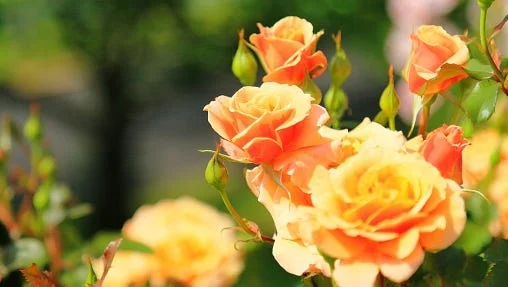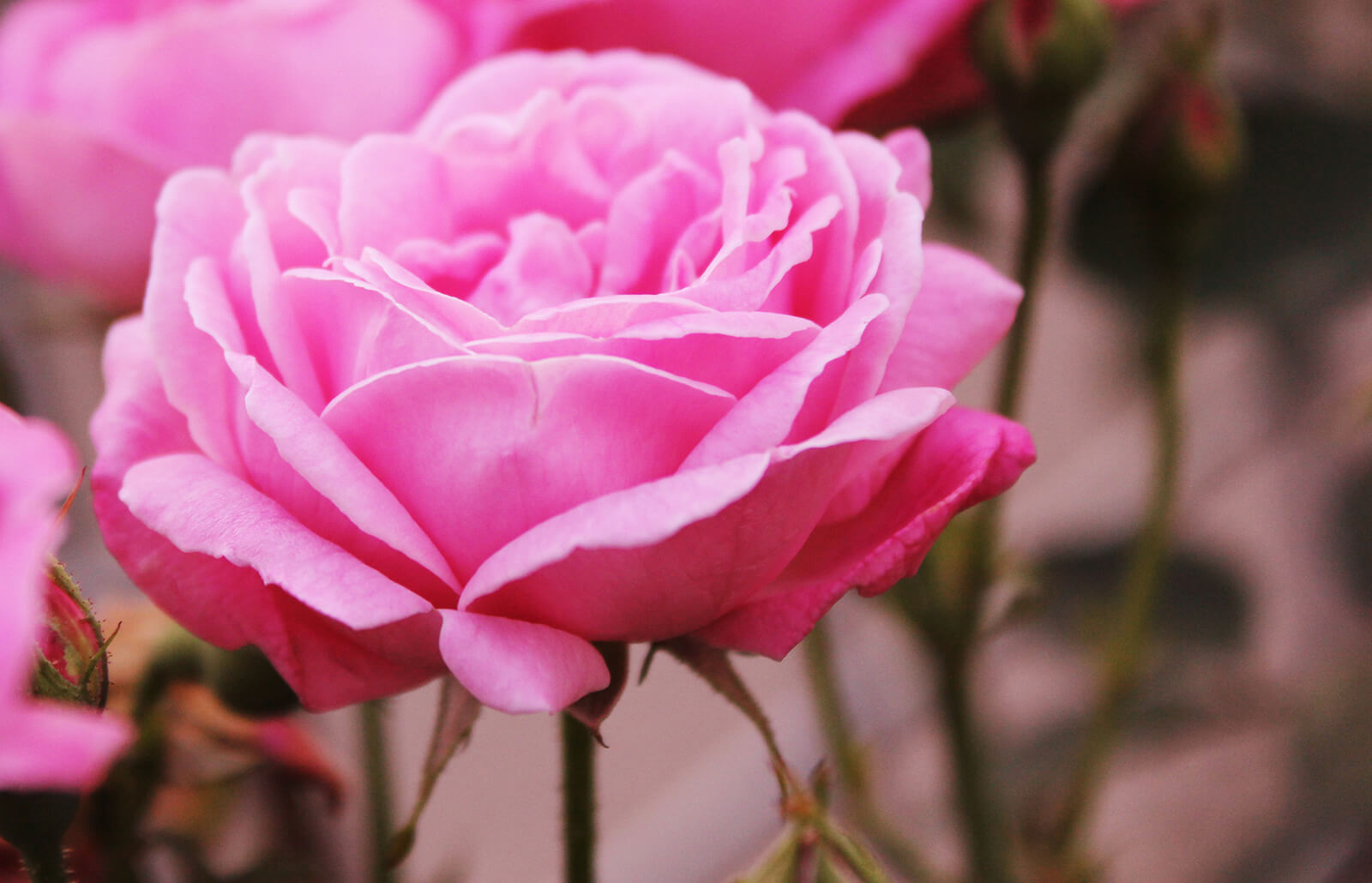When to Plant Roses in Kentucky

When to Plant Roses in Kentucky The best time to plant roses in Kentucky is during the spring, after the last frost has passed. Spring is also the best time to fertilize roses.
When to plant roses in Kentucky? The best time to plant roses in Kentucky is early spring, just as the last frost is melting away. This allows the roots of your rose bush to get a head start on growing before the heat of summer sets in.
Roses do best in full sun, so choose a spot in your garden that gets at least six hours of sunlight each day. well-drained soil is also important for healthy roses, so be sure to amend your soil with compost or other organic matter before planting.

Credit: garden.lovetoknow.com
What is the Best Month to Plant Roses?
The best month to plant roses is typically considered to be either April or October. This is because the weather is not too hot and not too cold, which allows the roots of the plants to establish themselves before the harsh temperatures of summer or winter set in. However, planting in May or September can also be successful if you take care to protect your plants from extremes of temperature.
When Should You Not Plant Roses?
When should you not plant roses?
The answer to this question depends on a few factors, including what type of rose you want to plant and where you live. If you’re unsure about when the best time is to plant roses in your area, it’s always best to ask a local nursery or garden center.
That said, there are a few general guidelines you can follow. In general, it’s best to avoid planting roses during the hottest months of the year (July and August in most parts of the country). The heat can stress out newly transplanted roses and cause them to wilt or even die.
It’s also important to avoid planting during times when the ground is frozen solid. This can damage both the roots and stems of your rose bush. Wait until springtime, when the ground has thawed and is soft enough for digging.
Do Roses Grow Well in Kentucky?
Roses are a type of flowering shrub, and there are many different varieties that can be grown in Kentucky. The most popular types of roses grown in Kentucky include hybrid tea roses, floribunda roses, and grandiflora roses. Roses require full sun and well-drained soil to thrive.
They should be fertilized regularly and pruned in late winter or early spring.
Where is the Best Place to Plant a Rose Bush?
If you’re looking for the best place to plant a rose bush, there are a few things you’ll need to take into account. First, roses need at least six hours of sunlight per day, so you’ll need to choose a spot in your yard that gets plenty of sun. Secondly, roses like well-drained soil, so avoid any areas that tend to stay wet or soggy after a rainstorm.
Third, it’s important to give your rose bush room to grow – they can get pretty big! So pick a spot that has some space around it.
Once you’ve found the perfect spot for your rose bush, dig a hole that’s about twice as wide and deep as the container your bush came in.
loosen up the roots before planting and then backfill the hole with soil, tamping it down gently as you go.
How To Grow Roses – This Is What Professionals Do!
When to Plant Roses in Zone 5
If you’re lucky enough to live in rose growing Zone 5, you have a wide range of planting options for your garden. Here are some general guidelines to help you choose the best time to plant roses in Zone 5:
– For bare root roses, plant them between late fall and early spring.
The ideal time is usually mid-October to mid-November, or early March to early April.
– If you’re planting potted roses, they can be planted any time of year except during periods of extremely cold weather. The best time to plant potted roses is usually early spring or late fall.
– When planting Knock Out® Roses and Drift® Roses, we recommend waiting until after all danger of frost has passed before planting them outdoors. These varieties are more sensitive to cold weather than other types of roses.
Whichever type of rose you choose, be sure to give it plenty of room to grow.
Most roses need at least 6 hours of sunlight per day, so make sure your planting site gets plenty of sun. And remember – happy gardening!
Planting Roses in the Fall
When it comes to planting roses, many people think that spring is the best time. However, fall is actually an ideal time to plant roses. The cooler temperatures and longer days of autumn help promote root growth, giving your roses a strong foundation on which to grow.
Plus, the soil is typically more moist in fall than it is in spring, making it easier to dig trenches and holes for planting.
If you live in an area with mild winters, you can plant your roses as early as September. For those who experience colder winters, wait until October or November.
When selecting rose bushes for planting, look for healthy specimens with dark green leaves. Avoid any plants that are wilted or have yellowing leaves, as these may be indicative of disease or pests.
To plant your roses, dig a trench that is about 18 inches wide and 18 inches deep.
Place the roots of the bush into the trench so that the bud union (the point where the main stem meets the roots) is about 2-3 inches below the soil surface. Backfill the trench with loose soil and water well. Mulch around the base of each bush to help protect against extreme temperature fluctuations and keep weeds at bay.
With proper care, your newly planted rose bushes should thrive come springtime!
Is It Too Late to Plant Roses
No, it’s not too late to plant roses! In fact, depending on what region of the country you live in, you may be able to plant roses right up until the end of November. However, if you live in an area with harsh winters, it’s best to wait until springtime to plant your rose bush.
When planting a rose bush, make sure to choose a spot that gets plenty of sunlight and has well-drained soil. Also, be sure to dig a hole that is twice as wide as the roots of your rose bush and mix in some compost before planting. Water your newly planted rose bush regularly (about once per week) for the first few months and then cut back on watering as the roots begin to establish themselves.
With proper care, your rose bush should thrive and provide you with beautiful blooms for many years to come!
Can I Follow the Same Planting Schedule for Roses in Minnesota as I Would in Kentucky?
When it comes to planting roses in minnesota, it is crucial to consider the specific climate and growing conditions in the region. While the general principles of rose planting remain the same, the timing might differ compared to Kentucky. It’s important to adapt the planting schedule to suit the colder climate in Minnesota and ensure the roses thrive in their new environment.
How to Plant Roses in the Ground
Roses are one of the most popular flowers in the world, and planting them in the ground is a great way to add some color and beauty to your yard or garden. Here are some tips on how to plant roses in the ground:
1. Choose a sunny spot in your yard or garden for planting.
Roses need at least 6 hours of direct sunlight each day.
2. Select healthy, disease-free rose plants from your local nursery or garden center. Avoid purchasing plants that have wilted leaves or stems.
3. Prepare the planting area by removing all weeds and grass from the area where you will be planting the roses. Loosen the soil with a shovel or spade to allow roots to penetrate easily.
4. Dig a hole that is wide enough and deep enough to accommodate the root ball of your rose plant.
The hole should be about twice as wide as the root ball and just deep enough so that the plant’s crown (where the roots meet the stem) is level with or slightly below ground level when planted.
5. Gently remove your rose plant from its container and place it in the prepared hole, making sure thatthe crown is level with or slightly below ground level . Carefully fill in around the root ball with loosened soil, tamping down lightly as you go along so there are no air pockets aroundthe roots .
Water deeply immediately after planting .
Conclusion
The best time to plant roses in Kentucky is in the spring, after the last frost. The soil should be warm and the days should be getting longer.
